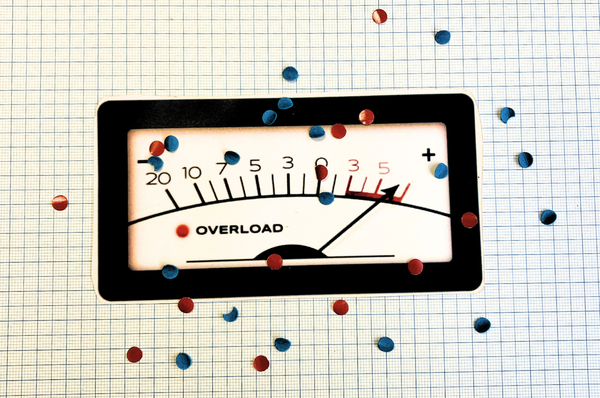Latest MEP candidate ad spending; and what does it cost to win (and lose) a Euro seat?
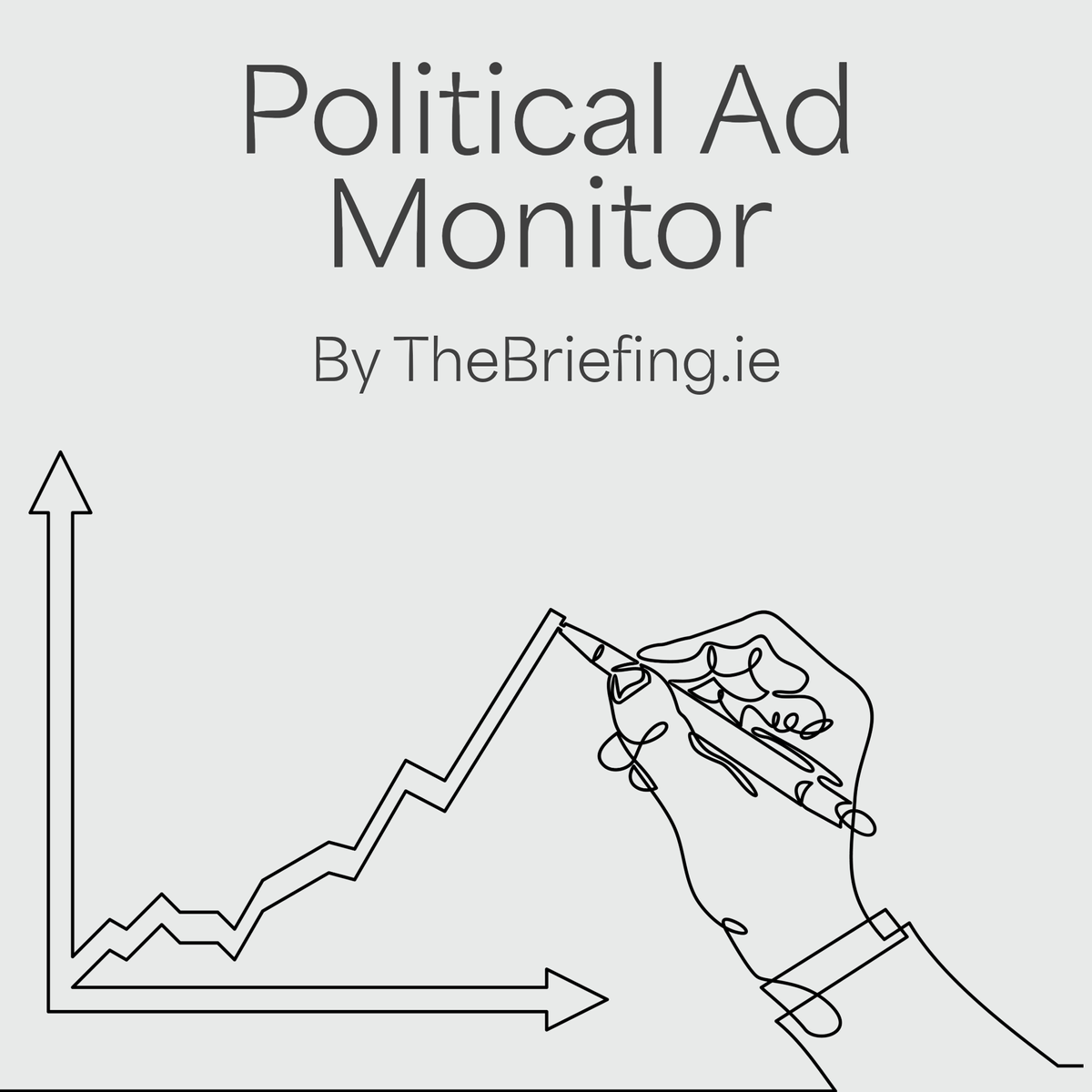
We last looked at online ad spending by MEP candidates two weeks ago. Since then campaigning has ramped up, and we are starting to see patterns emerging that tell us about party strategies. It also sparks lots of questions about the role of money in Irish elections, something we ordinarily consider quite unimportant.
Let's start by looking at the most recent ad buy data, which we'll then put in the bigger picture of what we know about what parties did last time around.
What are MEP candidates are spending on online ads?
In the past 2 weeks, MEP candidates have spent €30k on Meta platform (Facebook & Instagram) ads. The biggest spender was Fine Gael's Maria Walsh, who went from close to zero ad buys to top of the table. As we'll see, Walsh was a big spending in the last elections too.
Just one of Sinn Féin's six candidates makes it into the top 20, though that party, as we'll see in a minute, are continuing a strategy of highly centralised spending.
{As I've done before, the source is WhoTargetsMe's compilation of Meta ad archive data.}
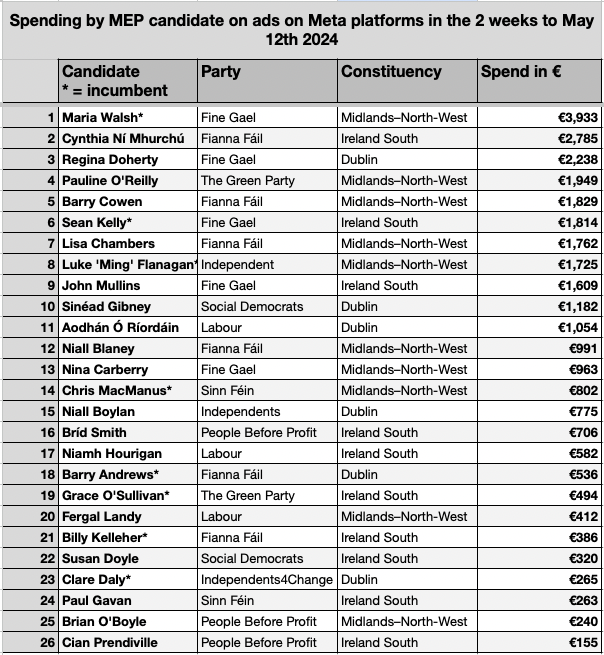
Maria Walsh pushed Fianna Fáil's Cynthia Ní Mhurchú to second. But if we take the longer term view, Cynthia Ní Mhurchú is still the biggest spender this election cycle.
She has bought €11k worth of Meta ads since the start of campaigning in March, making up over half of the total spend by all candidates in Ireland South. Her party colleagues in Fianna Fáil continue to be big spenders too.
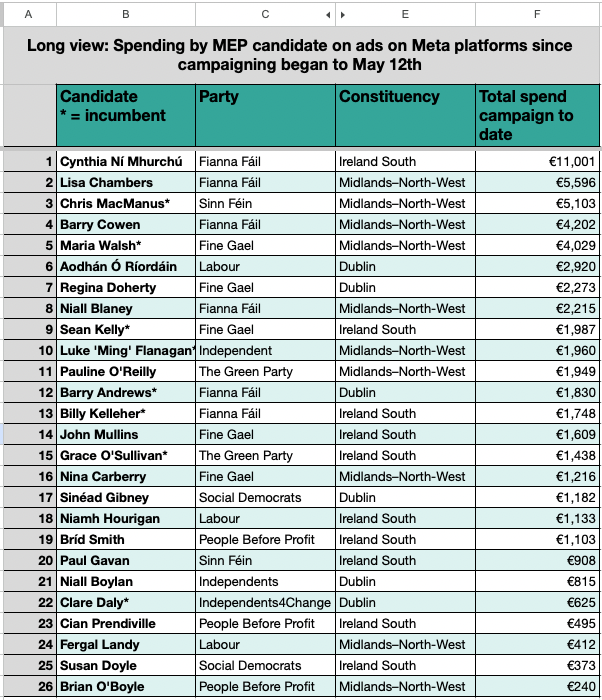
But what is party level spending like?
The picture is different when we look at what parties are doing with their main or official Facebook and Instagram "party" accounts.
Here Sinn Fein is outspending the others; they've spent over €45k since March 1st on ads from that one, national account, more than double all other main parties combined.
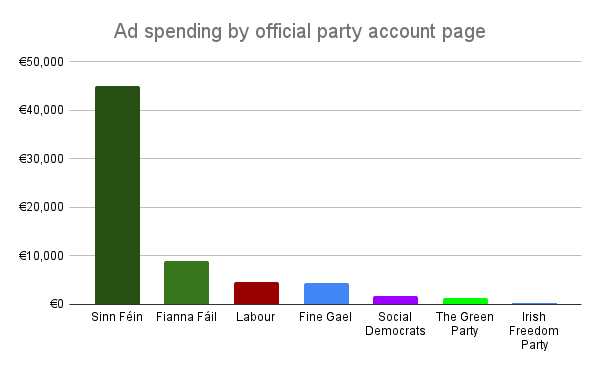
When we layer these two sets of spending - by main party accounts, and by candidates - we see that this national level spending is enough to put Sinn Féin at the top of the overall party spending rankings.
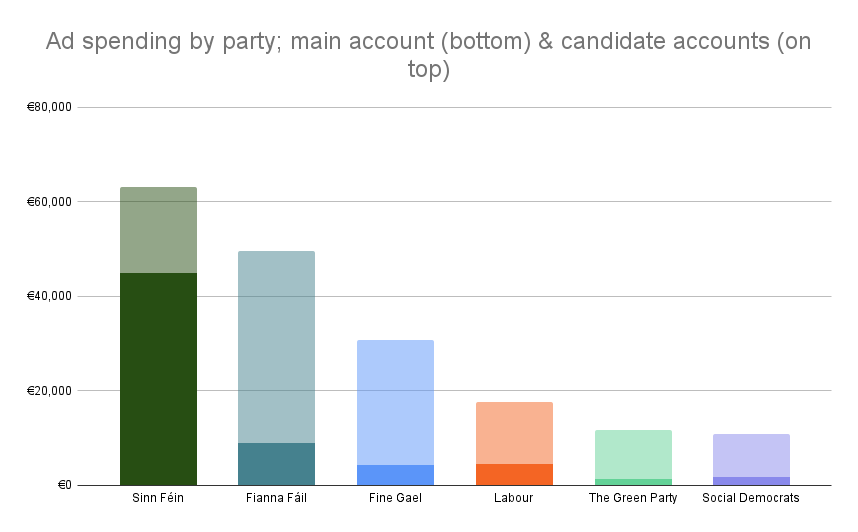
This continues a trend for these Euro elections of Sinn Féin having a much more centralised campaign than other political parties in Ireland.
To see if this was just a quirk, or just part of the digital strategy, I went back to the 2019 European election spending data.
What does this tell us about party strategy? A look back to 2019
After elections, parties and candidates submit data to SIPO, the political finance regulator, on their campaign expenses and donations. You can look through the data here, though a warning - it is a LOT of scanned, mostly hand written documents.
If we look at party level expenditure in 2019, we can see something similar to the pattern in 2024 digital ad spending.
In 2019, 85% of Sinn Féin's total expenditure in the Euros was by the central party, rather than out of candidates own pockets or local fundraising, compared to about 66% for Fine Gael and Labour, 37% for the Greens, and 0% for the smaller parties.
In that election, Fianna Fáil had similar proportions of party expenditure to Sinn Féin, though in monetary terms, they spent about 2 and a half times what Sinn Fein did. The party gave candidates over €600k from the central pot to run their campaigns, plus spent an additional €50k on a national campaign.
It will be interesting to see if Fianna Fáil in particular have changed tactics this time, as the patterns in their online ad buys seem to suggest a much less centralised campaign, letting candidates lead (got any insight here? Email me)
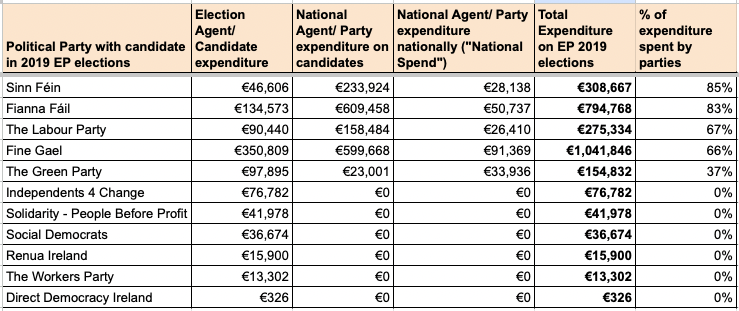
The biggest spender last time around was Fine Gael, who all in spent over a million Euro getting their five MEPs elected.
And that money was not distributed evenly. Parties give a breakdown of how much they gave to each candidate, and Fine Gael's table is below by way of example.
We can see that the party gave much higher volumes of cash to new candidates, like Maria Walsh and Mark Durkan, perhaps expecting party grandee like Mairead McGuinness and Frances Fitzgerald, to have fundraising powers, and strong name recognition, and be in less need of party support.
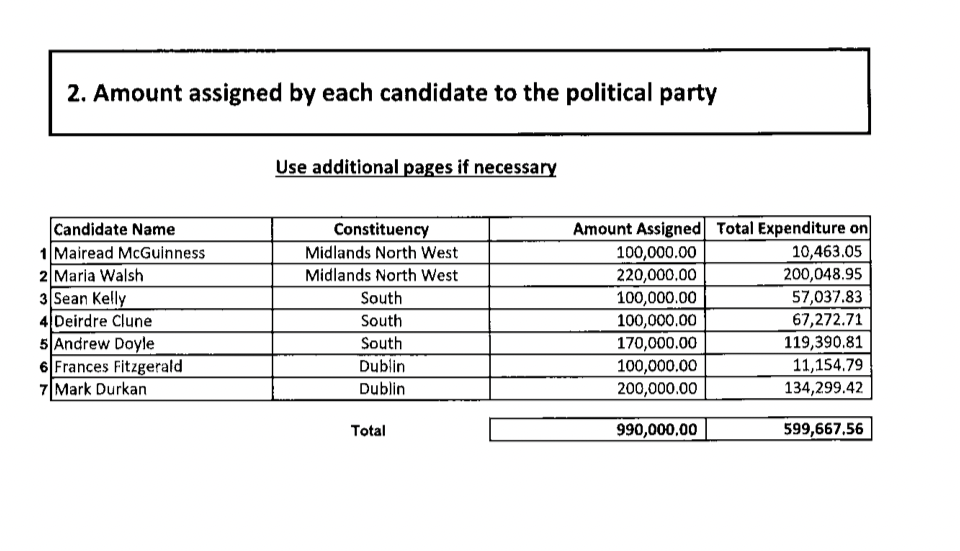
This party support is especially interesting if we look at it in the context of the funding it takes to win a seat.
How much does it cost to win - or lose - an MEP seat?
According to candidate declarations, winning campaigns spent between €37k and (gulp) €200k.
The unsuccessful campaigns* are mostly spread on a similar gamut, at €36k - €195k**, suggesting that big bank balances doesn't necessarily guarantee big wins.
*Note: these are the candidates who got their expenses refunded, meaning they reached 1/4 of the quota, or roughly 5% of votes.
The outlier in unsuccessful candidates is Saoirse McHugh, with a declared campaign spend just under €16k. She may not have won, but she actually beat the highest spending unsuccessful candidate in the number of first preferences votes received, a candidate who spent 12 times as much.
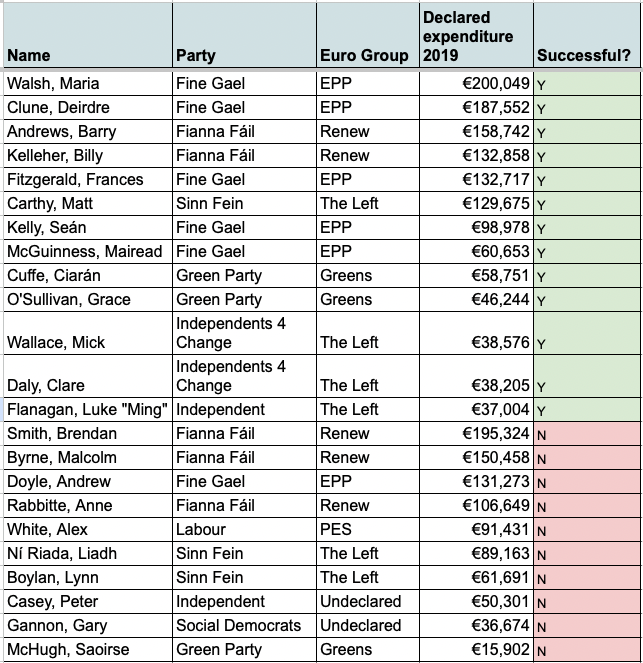
All of this raises many more questions than it answers. Going into the hundreds of pages of data from the last Euros will yield a lot of answers about the role of money in Irish politics, as well as the role of digital campaigning.
It would be a long and painful process though - if you would like me to give it a go (or if you have done some of it already) - or indeed if you have any thoughts or feedback, please do DM or email me.
*Correction notice: an earlier version of the final table in this post had Matt Carthy as unsuccessful in the 2019 elections - he did win a seat, standing down in 2020 when he won a Dáil seat, and was replaced in Brussels by Chris MacManus.



